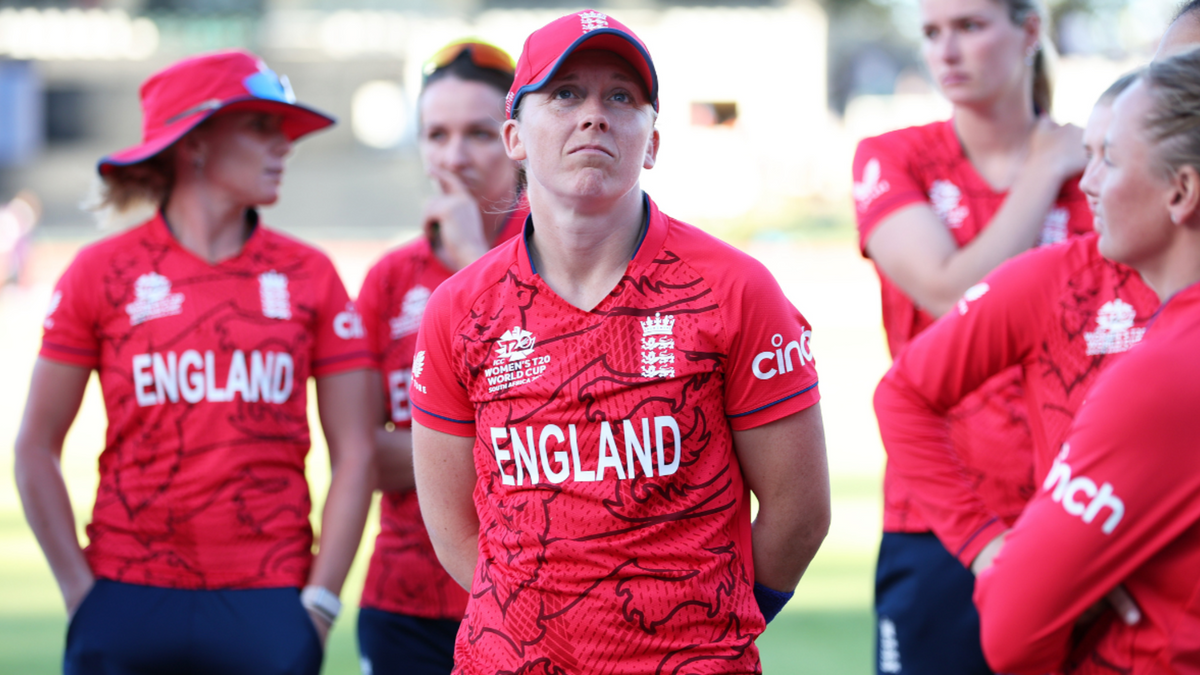
England have stuck with their tried and tested method to keep the Ashes series alive rather than back their breakout stars for the T20I series, writes Katya Witney.
You can bet on the 2023 Ashes with our Match Centre partners, bet365.

In the only Test match of the Ashes series at Trent Bridge, of all England’s fast bowlers, it was relatively unknown international debutante Lauren Filer who caused Australia the most trouble. Filer won’t be playing in the T20I series, which in itself is understandable. She bowled 33 overs at Trent Bridge, with no experience of long-format cricket beforehand and a tight turnaround before the T20I leg. Her absence, however, is illustrative of a safety-first approach in the squad England have selected.
Four-nil down in the series, England need to win five of the next six to regain the Ashes. The familiarity of the names in their squad, announced this morning (June 28), struck a predictable note for a situation that demands something radical. There is a logic, with the Ashes on the line, in picking your best and most experienced players. When one slip-up has the power to give away the Ashes again, on the face of it there would be a risk in throwing in a less-tested player such a tough environment. Similarly, a loss in a Test match perhaps shouldn’t hold much weight when it comes to selecting a T20I squad.
However, the situation on paper is different to the reality of the challenge. If England are to keep the Ashes alive, they have to win this T20I series, a format Australia haven’t lost a series in since 2017. Since then, Australia have lost just three individual matches, the latest of which – against India in 2022 – was so closely fought it came down to a super over. England last claimed a T20I victory over Australia in 2019, with seven players selected in this year’s squad also featuring in that match.
No side has found a formula which allows them to challenge Australia in any meaningful way over the last few years. The matches Australia have lost are anomalous rather than exposing a defined weakness. In such a scenario, rather than sticking to players who have had very limited success against them, there’s more of a case for ripping up the selection manual in favour of form players with fewer scars.
For potential bolters, take a look at England’s A squad, which will take on Australia A in three ODIs. Grace Scrivens was named its captain, continuing her wait to gain full international honours after bashing down the door for selection in the U19 World Cup, following up with a decent run in the Charlotte Edwards Cup. Bryony Smith, who scored a 35-ball 66 against Australia A in a T20 this week was also picked in the A squad. Australia are so good they’d likely pick up enough points against any team England selected, but there’s a case that some newbies could have injected some frisson into a series that could fizzle out.
The players who England have picked to challenge the incumbents for a place in the starting XI are familiar. Lauren Winfield-Hill retains her place in the squad, having travelled to South Africa for the T20 World Cup earlier this year but not played a match. She could challenge Amy Jones’ position as England’s all-format wicketkeeper. But while a look at Winfield-Hill’s domestic stats, as well as her century for England A against Australia last week, will tell you she’s in good form, her recent international record, without a fifty since 2016, contradicts that. Tammy Beaumont was the other option to challenge with the gloves. She has kept in eight T20Is, but her twin double centuries in the longer-format were not enough for a squad recall to the T20 side.
Issy Wong has regained her place in the squad as the paciest option to choose from. She was the second-highest wicket-taker in the WPL, but struggled in the Charlotte Edwards Cup. She didn’t take a wicket in either T20 against Australia A, and Filer’s selection over her for the Test match shows how quickly things can change at the top level.
The only selection that stands out is Danielle Gibson, but it’s hard to see a place for her in a starting XI if England continue the triple-spin approach they adopted in the World Cup. Even if they don’t, the plethora of bowling all-rounders they have to choose from makes her selection, for at least the first game, unlikely. She may well find her time comes only when the series is gone.
Overall, England have gone with their safe bets. The ones weathered enough from Australian defeats for another two to roll off their backs. They may well hold them off for a game, but it’s hard to see a point of difference from what they’ve tried before. Whatever squad they chose, the result would, in all likelihood, have been the same. But in that case, it might have made sense to try something new, at least in part.








